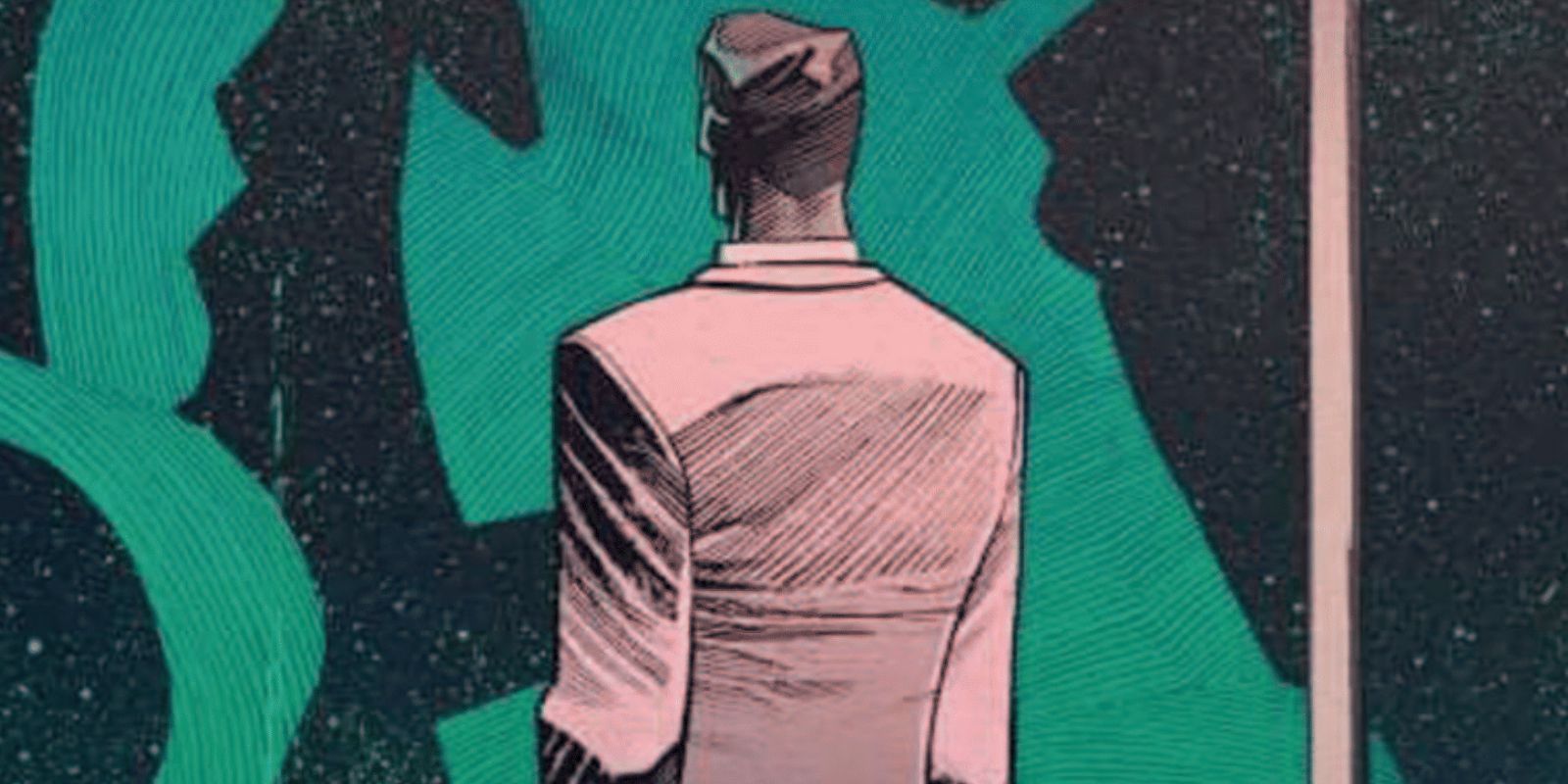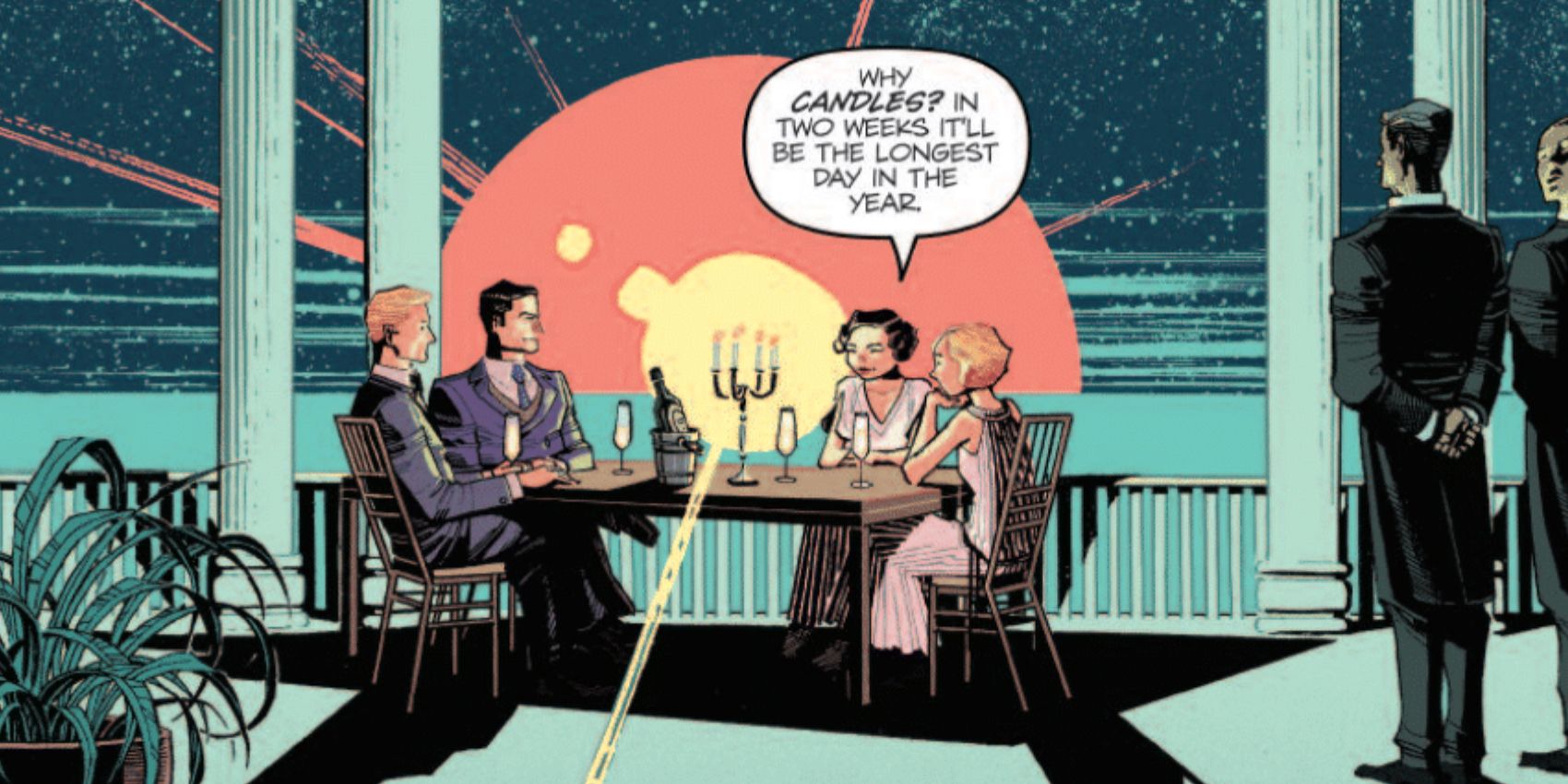Warning: spoilers for The Great Gatsby #1 are ahead.
F. Scott Fitzgerald's novel, The Great Gatsby continues to be ubiquitous nearly a century after its publication, with a new comic adaptation from Clover Press evidencing its evergreen qualities. Detailing the lives of New York's ultra-wealthy during the height of the Roaring Twenties, The Great Gatsby has been adapted numerous times in film, as its themes of the American Dream and the corrosive effects of wealth have remained relevant to succeeding generations. Clover's adaptation by Ted Adams and Jorge Coehlo seeks not to challenge current interpretations of The Great Gatsby so much as aim to reproduce the spectacle of excess that the novel is so well known for. The result is an adaptation that translates, rather than transforms, Fitzgerald's mainstay of American high school English classes to a new visual and textual medium.
The Great Gatsby is centered on a newcomer named Nick Carraway to the fictional town of West Egg on Long Island, where he rents a humble bungalow next to the extravagant mansion of a man named Gatsby. His distant cousin, Daisy Buchanan, and her husband Tom live nearby, and it is through the love triangle between Tom, Daisy, and Gatsby that Carraway discovers just how unfulfilled their lives are, despite their wealth. Fitzgerald's writing describes in detail the social niceties that underlie Carraway's interactions, revealing the hollow facade behind polite society.
With any adaptation of a classic, whether it be a book, play, or film, there comes a question of why it is necessary to reproduce the story in the first place. What insight can come from resurrecting a nearly one-hundred year-old story to a comic book format? How does its new medium supplement the original's themes? Adams and Coehlo's adaptation leaves the answers to these questions unclear, as it appears that their main objective is to truthfully render Fitzgerald's novel into a graphic format with as little disruption as possible. The Great Gatsby #1 still benefits from Fitzgerald's prose, even if its verbose style looks somewhat awkward on the page, which will be satisfying enough for fans of the book That said, as capable as Adams and Coehlo are at bringing this American classic to a new format, a lingering question remains of what they might have been able to achieve artistically if they weren't so tied to Fitzgerald's every word.
While Clover's adaptation of The Great Gatsby certainly works, its strict adherence to the text and Fitzgerald's descriptions give it an overly-stiff quality that hampers its potential as a comic book. For instance, two panels introduce Carraway's dwelling in West Egg, showing a small bungalow house and cozy interior occupied by his housekeeper, while the narration reads, "I found a house, a weather-beaten cardboard bungalow at eighty a month. I had a dog...and an old Dodge and a Finnish woman, who made my bed and cooked breakfast..." The text from the novel, while enjoyable enough to read, ultimately isn't necessary to communicate what the art already establishes about Carraway's simple living conditions. Fitzgerald's words are vivid enough for the reader to glean the same information and sentiment from the book's art, with the help of an artist's interpretation.
This is essentially the conundrum of The Great Gatsby as an adaptation: it is so attached to Fitzgerald's text that it doesn't explore what it could be if it made an interpretive leap. Fans of the book have already experienced its original form, but what they haven't yet experienced is a visual rendering of Fitzgerald's evocative words. While it is a straightforward, enjoyable read that will satisfy purists of the original book, The Great Gatsby #1 feels like a missed opportunity for new, interpretative insight into an American classic.
The Great Gatsby #1 is now available for purchase wherever comic books are sold.


